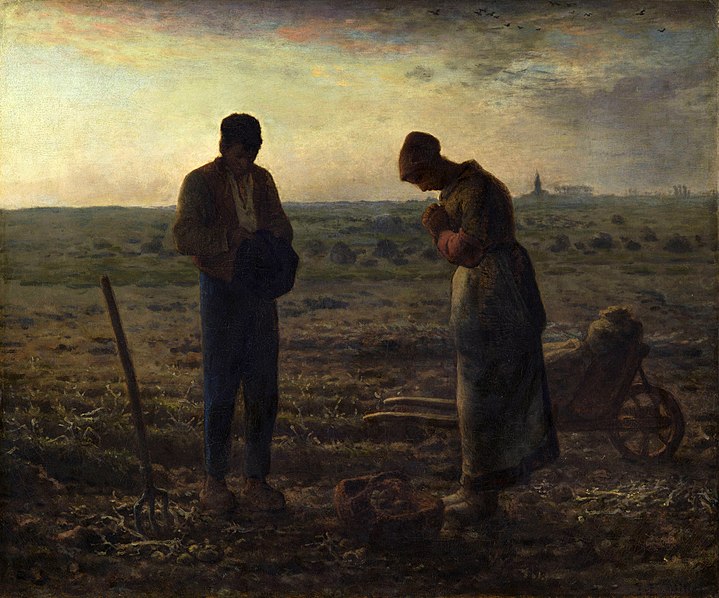 |
|||||||
| The Angelus by Millet. In past centuries, Church bells rang three times day to signal everyone should stop what they were doing and pray. |
St. Paul urges us to “pray constantly” (1 Thessalonians 5:17). But what does this mean? How can we practice it? When we reach a high state of the spiritual life, we will be in constant communion with God (see, I am assuming we are all going to make it that far). But in the meantime, we can form habits that help us pray throughout the day.
When two people fall in love, they want to spend as much time together as they can. Not only do they go out on a date very evening, they also contact each other during the day. When I was younger, we would call each other or send emails. Today, couples might text each other. Just to hear the other person’s voice or read his words of love would keep the smile on the loved-one’s face for hours.
We need the same kind of contact with God. Our “date” with God is our daily time set aside for nothing but prayer. But we should also talk to God throughout the day. At first, this might be difficult. It might even seem strange until we have formed the habit. We should remember that our little ways of connecting with God are acts of love.
Continue reading at Contemplative Homeschool.




 Instructions for Parents I recommend that you meditate on Luke 17:11-19 in your own prayer time before presenting it to your kids. If you’re not sure how to do this, look at
Instructions for Parents I recommend that you meditate on Luke 17:11-19 in your own prayer time before presenting it to your kids. If you’re not sure how to do this, look at 




